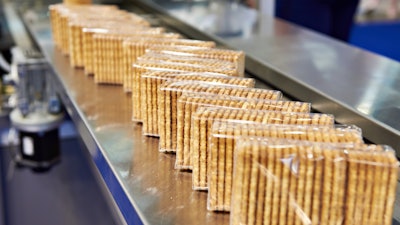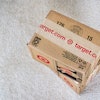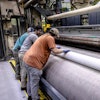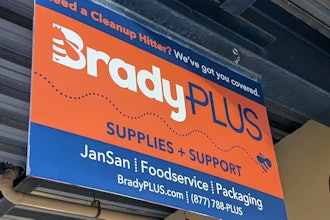
Packaging represents a significant portion of a food processor's expenses. Efficient packaging management throughout the business is critical in lowering costs, freeing up cash flow, and boosting profitability. Moreover, using the right packaging is crucial in delivering visually appealing, safe, and long-lasting food products.
More than ever, consumers are demanding packaging that aligns with their values regarding environmental sustainability. Partnering with the right packaging supplier is essential in meeting these requirements.
Packaging challenges and opportunities
For mid-sized food processors, efficiently managing packaging operations and keeping up with market trends and innovations in materials and technology can take time and effort. These businesses commonly have limited in-house packaging expertise in design, engineering, and supply-chain management and rarely have resources comparable to those of national and multi-national food corporations.
Let's look at the challenges that mid-sized food processors face and the opportunities available in streamlining and optimizing packaging design and operations.
Inventory management
Managing packaging inventory and supply chain issues can be a headache for food processing companies. Both areas offer many opportunities to lower costs, improve cash flow and working capital utilization, free up space, and keep operations flowing smoothly.
The packaging supply chain is a complex system. This complexity often grows over time as food products and related packaging evolve, taking on new packaging formats and often-times requiring new or additional suppliers, with each only offering solutions for one or two product categories.
Sourcing packaging materials from multiple suppliers not only means more supply chain complexity, it also reduces the economies of scale in the procurement process. As a result, controlling pricing, supplier quality, and product availability during supply chain disruptions becomes increasingly difficult. As SKUs multiply, staying on top of the packaging components can quickly and unexpectedly become unmanageable for many.
Technical support
Another challenge for business leaders is the availability of quality technical support. Maintaining and fixing many different packaging systems is difficult for even large-scale food processors with their own maintenance teams.
Packaging systems involve three types of equipment. At the beginning of the packaging line is the primary packaging, the retail packaging or consumer packaging that is in direct contact with the food product itself. Examples of primary packaging machinery are vertical baggers, horizontal wrappers, tray sealers, and thermoforming machines.
Secondary packaging equipment packs multiple individual packages into a larger corrugated shipper or flexible outer pack. Case packers, cartoners, and shrink wrappers are typical examples of secondary equipment. The third stage is the end-of-line equipment used to prepare packages for transportation and storage and includes tapers, conveyors, and pallet wrappers. And accurate and reliable marking/coding/labeling is constantly in demand at every step.
Packaging equipment vendors typically only support their own machinery and sometimes provide untimely, expensive technical support or are not trained to adequately address issues related to the variety of consumables and machine compatibility. Production downtime is not good for any business, but it can be catastrophic for food processors when any one piece of equipment causes disruption or missed opportunities – especially so during peak demand.
Productivity
Food production environments can be very labor-intensive and vulnerable to fluctuations in the availability of production workers. Three years into the pandemic, labor costs are rising, and businesses are struggling to find competent, reliable labor with the skills needed to contribute in their manufacturing and shipping facilities to keep operations running smoothly.
These business challenges have accelerated the adoption of lean manufacturing practices to eliminate wasted activity and enhance productivity, resulting in the long-term trend toward the automation of packaging operations. Automation solutions range from fundamental capabilities that have been used for decades, such as stretch wrapping, case erecting, sealing, coding, and labeling, to technologically advanced industrial robots and autonomous systems that efficiently perform pick and place, boxing, and palletizing.
The technology is evolving, and more than ever, mid-size food processors need help from supplier partners with packaging application expertise to take advantage of the efficiencies that can be achieved with automation and lean manufacturing practices.
Packaging design
Consumers are increasingly looking for packaging options that are eco-friendly and recyclable. They want to know that the products they purchase do not negatively impact the environment. In addition, consumers seek healthful food options that look and taste fresh and require little or no chemical preservatives. Packaging must do both – protect the food and be eco-friendly.
The food and beverage industry is adopting packaging manufactured from biodegradable and recyclable materials. Paper and other biodegradable alternatives are replacing single-use plastic straws, lids, closures, caps, cups, and food trays. These trends are driven by consumer demand and municipal, state, and federal government regulations.
And the pace of innovation to meet these demands is rapidly accelerating.
Partnering with SupplyOne
At SupplyOne, North America's leading packaging solutions provider, we recognized these challenges and responded by developing programs to partner with mid-sized food processors. Our Programs enable customers to better compete with the big food companies by making them more profitable. This approach utilizes SupplyOne's packaging expertise across many applications and industries, leveraging our economies of scale with 20 of our manufacturing facilities and over 3000 commercial distribution supplier partners to drive down total costs for customers and reduce supply chain bottlenecks.
SupplyOne Certified Packaging Specialists and Engineers take a 360-degree view of the entire packaging life cycle with customers – from package concept, material selection, testing & validation, graphics management, procurement, operational use, and finally, to end-of-life and end-user satisfaction.
SupplyOne Programs address the business of packaging too. We identify and address hidden costs and highlight opportunities for efficiencies in packaging operations through simplified order management, reduced on-site inventory and obsolescence, and just-in-time min/max replenishment programs. We help customers eliminate waste and non-value-adding activities that consume valuable resources and inflate the total cost of packaging ownership.
SupplyOne has a large staff of experienced technical service resources available to our customers. We support the industry's broadest array of equipment brands and applications, with expertise in nearly every consumable/equipment pairing in the packaging process.
Our 360-degree approach provides a one-stop experience that drastically simplifies all aspects of packaging operations. With SupplyOne as a partner, food processors can streamline packaging operations, lower their packaging expenses, get speed to market, win customers, and grow profits.
Gary Bourdow is senior vice president of food packaging at at SupplyOne.





















